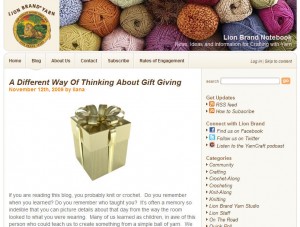Creative perks can go a long way to boost the employer brand. They improve employee morale, attract publicity, and entice passive candidates. But only if people know about them!
Recently I was reviewing the website of a fairly well-known company. They have a nice set of benefits—definitely above average—but the goodies aren’t given an effective presentation on the site. Instead of being highlighted with bullet points, bold type, etc., so they would jump out as the reader scans the page, they just sort of trail along in a lifeless list.
Lights under a bushel. But that’s not even the whole of it. One of those hidden highlights is genuinely novel and delightful: onsite music lessons!
Not every potential candidate will be as excited as I would be—but most would recognize this as a creative idea. And since the company is not in a creative business (really, not) that in itself is a plus. So why not give it feature status?
Turning to another gap, we have a company that focuses on employer branding and online communications. What do you think is on their own blog? As of this writing: two entries, the latest of which was posted two weeks ago.
This company is actually a specialty group owned by a name brand in media—not a start-up or a niche wannabe. So this seems like a really big miss! If there’s a cardinal rule for business blogging, it’s “Content, content, content.” Start with plenty, add often.
To see a lively, content-rich business blog, drop by Lion Brand Yarns. And for benefits well displayed, check out Starbucks–not flashy, but nicely defined, and supplemented with a very thorough downloadable brochure.
Last thought: I see a lot of missed opportunities and “incomplete passes” when I visit sites. I think this often happens because an idea seems fairly simple–like adding a blog or putting some content on the website—so no one is tasked with thinking it through and following up to ensure the implementation is both excellent (not just adequate) and complete.
Or it may be that whoever does have the responsibility is ill-suited to the task, over-burdened, under-supported, not incentivized, not empowered, or (for whatever reason) not willing/able to prioritize the task. But even simple ideas have to be executed well! And when they are not, the best-case scenario is a missed opportunity, while the worst is a glaring fumble.
Cynthia Giles has followed a serpentine career path from academia to publishing to marketing and design to information technology and corporate communications. There’s plenty of detail about this journey at www.cynthiagiles.com, but briefly--the common theme has been ideas, and how to present them effectively. Along the way, she became an accidental expert on data warehousing and business intelligence, and for the past ten years she has combined corporate contracting with an independent consulting practice that focuses on marketing strategy for smaller businesses and non-profits.
Having spent quite a bit of time looking for work, and anywhere from two weeks to two years inside a wide variety of American companies—she has given much thought to what works (and what doesn’t) when it comes to creating a great employment fit.

